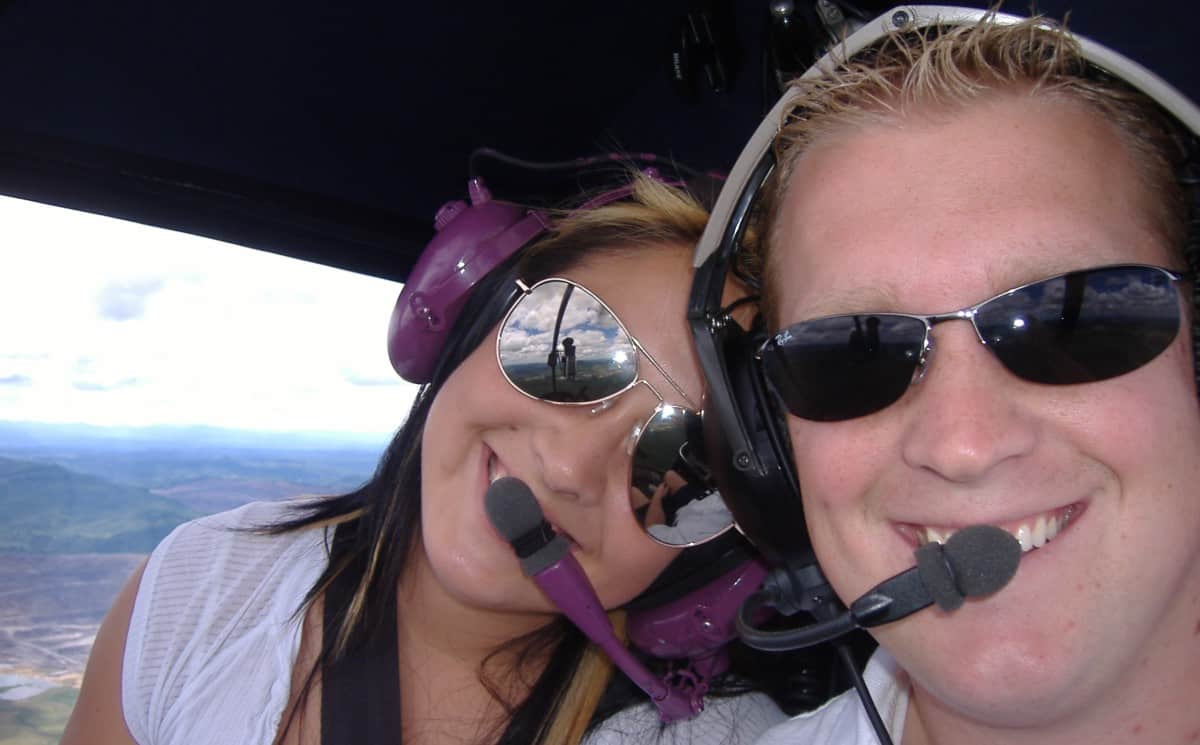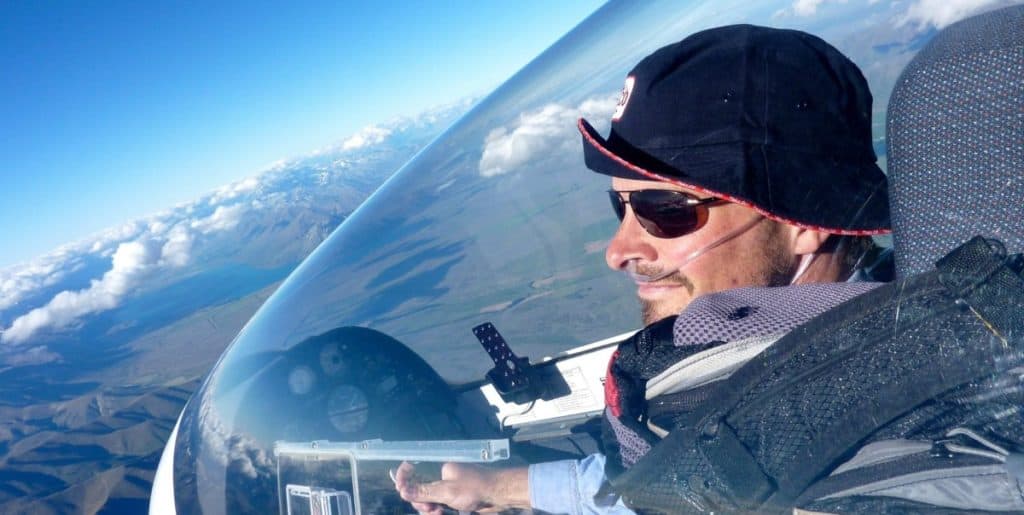
If you have a keen eye you may have noticed that most pilots are wearing sunglasses when they fly. Is it a coincidence they all seem to be wearing them or is it just the stereotype? There are good reasons why all pilots have a good pair of sunglasses and it’s not just to ‘Pick Up Dates’ in a bar!
Pilots need to wear sunglasses to protect their eyes from UVA & UVB radiation. UV radiation increases by 5% for every 1000 feet increase in altitude. Gray, Green/Gray & Brown are the best lens color & polarized lenses should not be used as they can filter out instrumentation colors on glass screens.
So let’s take a look at what these reasons are as to why all pilots seem to be wearing shades, and trust me it’s not to schmooze the ladies or fellas!
To help with this article I created a page recommending some of the best and most used aviation sunglasses. You can find the page HERE at the Pilot Teacher Store.
Do Pilots Wear Sunglasses For Protection?
By far the main reason why pilots wear sunglasses while flying is to protect their eyes from harmful ultraviolet rays. When we are on the ground the earth’s atmosphere does a pretty good job at filtering out most of the sun’s harmful UV rays.
Depending on where you are located, the time of year, and the altitude your eyes are at will depend on how much UV radiation they will receive. The altitude is the part that is of concern to pilots.
As your eyes climb higher into the atmosphere the amount of UV radiation they receive increases.
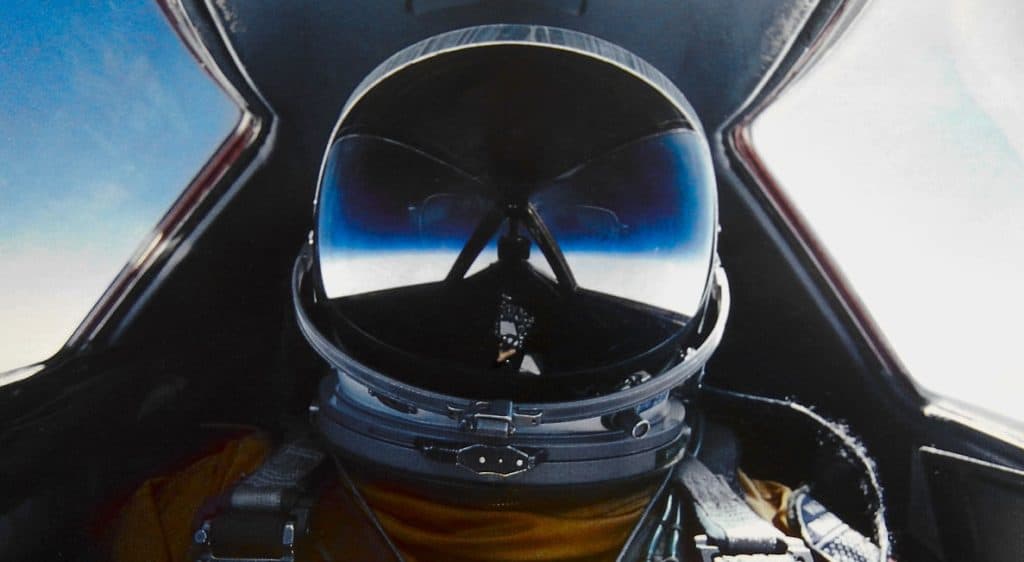
For every 1000ft of altitude gained, the amount of UV radiation increases by 5%, therefore when a pilot flies at 10,000ft their eyes are receiving 50% more UV radiation than on the ground!
To protect their eyes, pilots need a good quality pair of sunglasses that protect against both UVA and UVB radiation.
The American Optometric Association advises wearing of sunglasses that
incorporate 99 – 100% UVA and UVB protection (AOA Link).
I learned this lesson the hard way when I moved to the US from England and started flying using my cheap, no-name sunglasses I brought from the UK. Within weeks my eyes were beginning to get sore and it wasn’t until a student, who was also an optometrist solved my problem by asking me about my sunglasses!
This is when they informed me all about the information I am now passing on to you. That weekend I went and got myself a high-quality pair of Ray-Ban sunglasses that you can see in the header picture of this article! Luckily at my next eye exam, there was no damage to my eyes but it led to a great conversation with the optometrist!
Buying the right pair of sunglasses for flying is paramount but there are also other things to consider, not just protection from UVA & UVB. Keep reading to find out what other things you need to look for when selecting a pair of sunglasses.

Join My Newsletter & Get Great Tips, Information and Experiences To Help You Become a Superb Pilot!
What Are The Best Sunglass Lens For Flying?
Sunglasses are a very personal purchase and style can be just as important to a person as function. To help with this, most sunglasses manufacturers produce lenses of all colors but there are certain lens types that can really make a difference to a pilot.
The four most common lens colors used in aviation-specific sunglasses are:
- Gray
- Grey/Green
- Brown
- Black
By far the most recommended lens color is gray as it distorts color the least. This becomes incredibly important when looking over cockpit instrumentation showing limitations depicted by bands of color.
According to the FAA:
“sunglass lenses should screen out only 70 – 85% of visible light and not distort color. Tints that block more than 85% of visible light are not recommended for flying due to the possibility of reduced visual acuity, resulting in difficulty seeing instruments and written material inside the cockpit” – (FAA Source)
Grey/Green and brown lenses work well in hazy conditions as they help to increase contrast and enhance the vividness of objects.
Any of the above lens colors are perfect for aviation and it’s a case of picking the color which best suits the areas in which you fly.
NOTE:
Using lenses of a yellow tint can cause you to fly into weather that can be deteriorating more than you realize! I made this mistake with a yellow visor on my helmet. It was a foggy day and I took off down an exploration cut line a few hundred feet off the ground – I was in a helicopter ;).
Several minutes into the flight I looked over at my passenger who was as white as a ghost. I flipped up my visor and we were in near-zero visibility!! To me, the visibility had looked fine under the visor!
Yellow tints should ONLY be used to help you find your way OUT of poor visibility conditions, not to get you into them!!!
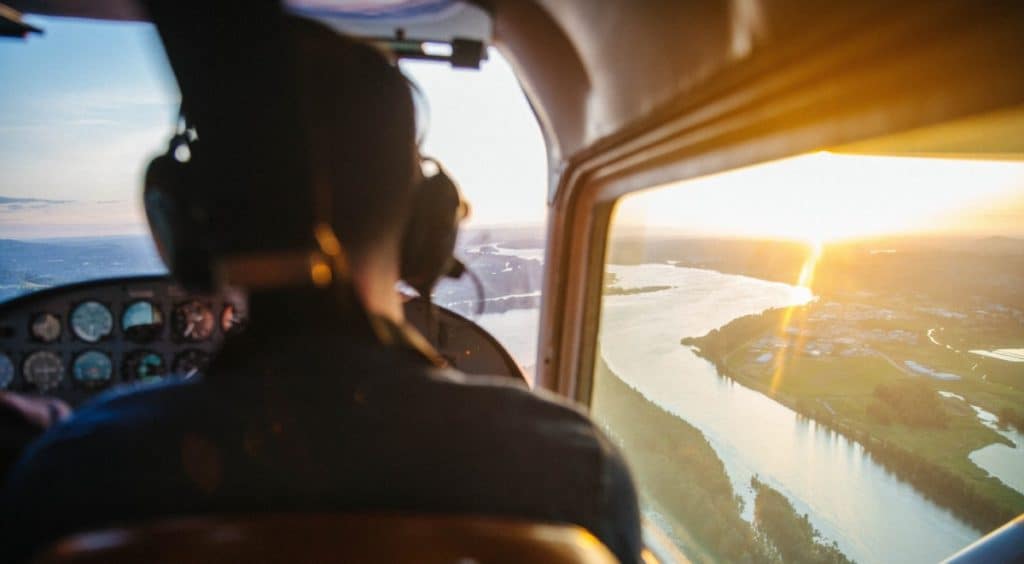
Can Pilots Use Polarized Sunglasses?
A question often asked by flight students is about the use of Polarized Sunglasses while operating an aircraft as they are so good at cutting out glare.
Polarized sunglasses should NOT be worn while in active flight duties.
Polarized sunglasses work by blocking light and reducing glare from horizontal light while allowing in vertical light. This can prevent accurate reading of cockpit instrumentation, especially a glass cockpit that emits polarized light and have anti-glare filters installed.
Polarized lenses also reduce the pilot’s ability to spot other aircraft when looking outside. Glimmers or glare given off by other aircraft as they catch the light can be blocked by polarized lenses leading to the aircraft being unnoticed by the wearer.
Things to Consider When Buying Sunglasses For Aviation
So we have lens colors and Non-Polarized lenses figured out, but what else?
Frame Material – Frames must be light, strong, and comfortable. I bought a pair of plastic-framed sunglasses just for driving, but they clamped into my temples so hard they gave me a headache. The same is true for flying.
Be sure to find frames that sit comfortably under the earcups of your headset and don’t apply too much pressure around the sides of your head.
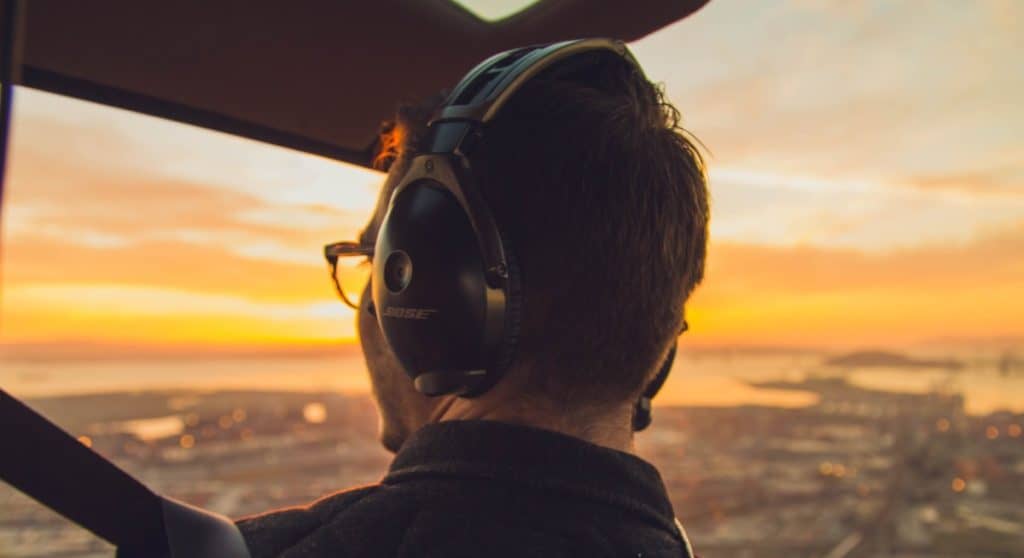
Ease of Installation – This might sound odd, but when flying a helicopter, for instance, the pilot is unable to let go of the cyclic with their right hand. This means everything has to be done with the left hand, including taking sunglasses on and off. Tight-fitting ones can be difficult to put on with just one hand! – Trust Me I Found Out The Hard Way!
Lens Coating – Many sunglasses come with coatings to help reduce glare but lenses made of CR-39® plastic can scratch easily. I have lost count of how many times I’ve scratched a lens when doing a preflight inspection and they have fallen off my head or I’ve bumped them on a part of the aircraft.
Crown Glass and Polycarbonate lenses scratch the least.
Transition or Photochromatic Lenses – These are the lens that can auto-dim according to the amount of UV radiation they receive. Care should be taken as they take some time to adjust to their darkness. This could cause potential problems when flying in and out of cloud shade in busy airspace.
Also, be aware that at temperatures over 70°F the lenses may not darken enough to correctly shield the eyes from UV radiation. A hot cockpit at high altitudes could lead to eye irritation or worse if used for long periods.
To Finish
All pilots need a good pair of sunglasses that protect the eyes from UVA and UVB radiation. The higher the aircraft climbs, the more risk of damage to the eye becomes. Selecting a pair of sunglasses that are hard-wearing, comfortable, non-polarizing, and of the correct lens color will ensure your eyes remain protected while allowing you to see inside and out with the clearest vision.
My recommendations for a good quality pair of sunglasses would be Randolph, Serengeti, Ray-Ban, Oakley, or AO. These are all well-tested and highly popular among both male and female aviators worldwide and you can find a great selection Here at our Pilot Store:
Further Reading
If you found this article interesting and would like to keep reading, I highly recommend the following articles from my blog:

